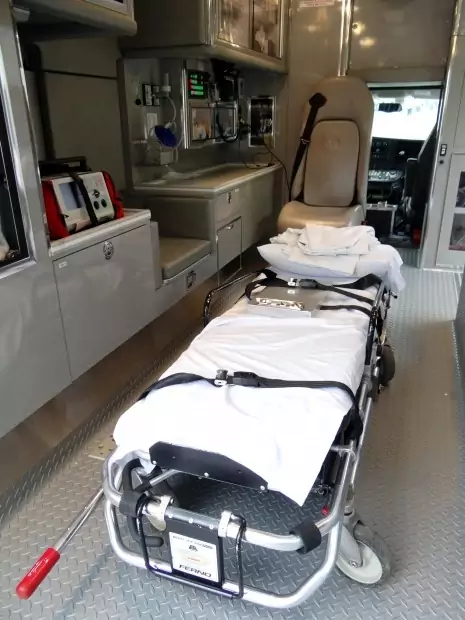Training to Protect Workers Against Bloodborne Pathogens

Bloodborne pathogens are infectious microorganisms found in the human bloodstream that have the potential to cause disease. These pathogens include hepatitis B (HBV), hepatitis C (HCV) and the human immunodeficiency virus (HIV). Workers in many industries from first responders and police officers to personal caregivers and nurses to correctional officers and frontline social workers are all at risk of coming into contact with bloodborne pathogens on the job.
While there is no guarantee that coming into contact with a bloodborne pathogen will result in an infection, exposure puts one at risk. For this reason, ensuring workers are safe is critical, and the best way to do this is by providing workers in high-risk occupations with training on the topic.
In this article we explore what bloodborne pathogens are, which employees are covered by the Federal Occupational Safety and Health Administrations’ guidelines regarding bloodborne pathogens, and how and why to adopt a learning management system to ensure your workers are aware of the dangers of bloodborne pathogens and prepared to protect themselves using the most up-to-date equipment and procedures. Download free whitepaper on the top 3 most in-demand OSHA compliance trainings.

Employers’ Legal Obligation to Protect Workers Against Bloodborne Pathogens
In 1991, the Federal Occupational Safety and Health Administration (OSHA) issued the Occupational Exposure to Bloodborne Pathogens Standard. In addition to recognizing that many employees have a high risk of coming into contact with bloodborne pathogens on the job, the OSHA guidelines emphasize that in most cases, exposure to these pathogens can be minimized or entirely eliminated by taking the right steps. Specifically, the OSHA maintains that workplaces where exposure is likely to happen must have an exposure control plan in place and revise and update the plan on a regular basis. The control plan must include guidelines on how to issue precautions to workers and institute workplace controls, outline what protective gear should be used under what circumstances, and detail how to carry out decontamination when and if exposure occurs.
Determining Whether or Not Your Employees are Covered by the OSHA’s Bloodborne Pathogen Standard
OSHA guidelines on bloodborne pathogens apply to any employee who can “reasonably anticipate” exposure to bloodborne pathogens or pathogens carried through other potentially infectious materials (e.g., mucous, saliva or semen) on the job. Any employer who has an employee who may experience occupational exposure to blood or other potentially infectious material must complete an “exposure determination.” The determination must be completed whether or not employees wear protective equipment on the job. Among other information, the exposure determination must identify and document all job classifications in which all employees have exposure to bloodborne pathogens, and all job classifications in which only some employees have exposure.
Key Components of Bloodborne Pathogen Protection Training
Among other key components, employers should ensure that their bloodborne pathogen protection training contains vital information on the following topics:
- Occupational Safety and Health Administration (OSHA) Requirements: Ensure employees are fully aware of OSHA guidelines regarding bloodborne pathogens and that they understand their rights and responsibilities as employees working in an environment where they are at risk of exposure.
- Exposure and Health Effects: Ensure employees understand what constitutes exposure, as well as the potential health side effects of exposure to bloodborne pathogens and pathogens carried in other potentially infectious materials.
- Controls: Educate employees on the general controls they should take to prevent exposure (e.g., appropriate protective equipment) and on specific controls they should take to prevent exposure in the workplace environment in question (e.g., how to intervene in a conflict that occurs in a facility where clients may carry or are known to carry bloodborne pathogens).
- Post-Exposure Actions: Outline steps that employees should take immediately and over time to respond to exposure if and when it does occur.
Bloodborne Pathogen Protection Training, Shift Workers and Online Learning

As already emphasized, some workers are more likely to experience exposure to bloodborne pathogens than others. Among the occupations most likely to be impacted are the following: first responders, police officers, personal care givers, nurses, correctional officers and frontline social workers. Notably, nearly all of these workers are shift workers.
As discussed in several earlier posts on the eLeaP blog, adopting a learning management system is an especially effective way to provide high-quality training to shift workers. This is because shift workers often pose unique challenges when it comes to training. Studies have shown that shift workers are frequently at a disadvantage when it comes to training outside of work hours since their irregular schedules limit the amount of time they have available to complete regularly scheduled evening or weekend courses. In addition, shift work has been repeatedly shown to result in high levels of fatigue that can impede workers’ ability to concentrate and retain new information.
For this reason, shift workers are among the workers most likely to gain from alternative training methods, such as eLearning and mLearning. Among other benefits, a learning management system can enable an employer to offer critical training—on a topic like bloodborne pathogens—in a flexible format and in short, easy-to-retain modules of five to fifteen minutes. Most importantly, an effective learning management system can enable workers to return to key learning modules as required. Finally, a flexible learning management system will ensure that employers are able to introduce refresher courses and track training on an ongoing basis. In short, using a learning management system to deliver bloodborne pathogen protection training to at-risk workers is an effective way to respond to workers’ needs and to ensure compliance with federal regulations.
eLeaP’s Master Course Library on Bloodborne Pathogens
eLeaP offers a range of online training courses on the critically important topic of bloodborne pathogens; relevant titles in eLeaP’s master course library include the following:
- Bloodborne Pathogens: Always Protect Yourself: This course serves as an introduction to bloodborne pathogens; it examines exposure risks, precautions, protective equipment, safe work practices and follow-up procedures.
- Bloodborne Pathogens Training for Employees: This online training course offers advice to all employers, not simply those in the healthcare sector, on how to protect employees from bloodborne pathogens. In addition to explaining bloodborne pathogens, this video outlines how any organization can adopt “Universal Precautions.” Specific topics include how to develop a control plan (as required by the OSHA), protective equipment, and post-exposure procedures.
- Bloodborne Pathogens in Commercial & Light Industrial Facilities: This video outlines how exposure to bloodborne pathogens occurs in commercial and light industrial facilities and how workers can protect themselves on the job.
- Bloodborne Pathogens in First Response Environments: This video is for first responders—a group of workers at great risk of exposure to bloodborne pathogens. The video covers key topics, including how first responders can avoid exposure to diseases, such as Hepatitis C and HIV.
- Bloodborne Pathogens in Healthcare Facilities: This training video targeting health care workers and their supervisors offers an overview of OSHA Bloodborne Pathogen Regulations, and outlines how bloodborne pathogens are transmitted. It also examines the importance of early detection and how to limit exposure on the job.
- Bloodborne Pathogens in Heavy Industry: While most health care workers and first responders are well aware of the risks of bloodborne pathogens, far fewer workers in heavy industry are already aware that they may also be at risk. This video examines how to prevent exposure in heavy industry using appropriate engineering controls, effective work practices, vaccinations, and protective equipment.